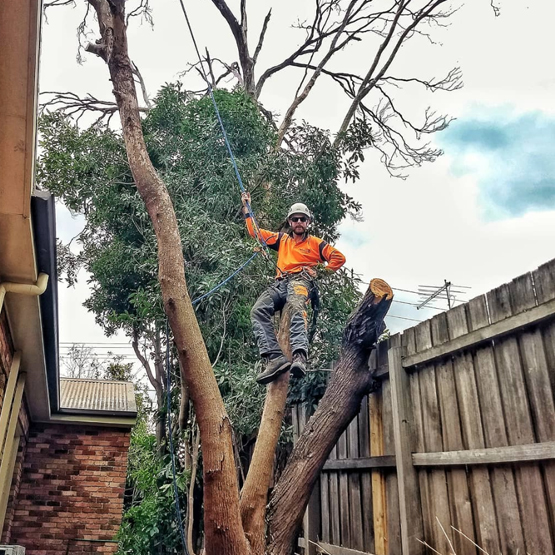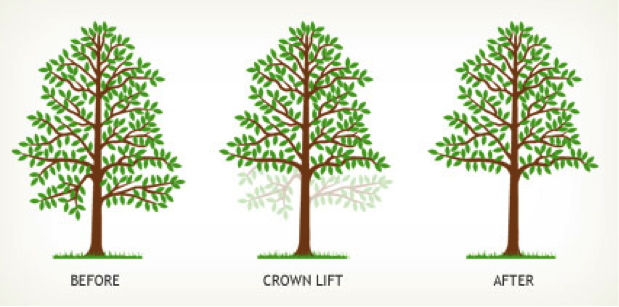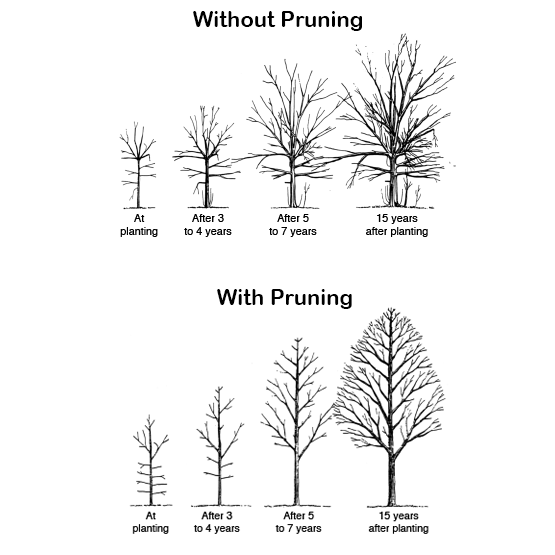Our Experience
A taste of what we offer
Why taking care of your trees ?
Taking care of your trees is very important and a proper tree management it’s an investment that can lead to substantial returns. They not only provide oxygen, clean the air from the pollution and trapping the dust on their leaves, they also shade your house cooling it down and reducing the electricity bill in summer up to 25%, and acting like a wind break reducing the heating costs in winter; furthermore, they are great noise barrier and give shelter to the wild life.
Property values of landscaped homes are 5 to 20 percent higher than those of non-landscaped. And it has been proved that just with their presence threes ae able to reduce the stress and improve mood. Trees are essential for our life, they are not just part of your garden, and your own tree plays an important role for all of us, so when it comes to manage them
Tree pruning
Pruning is always a stressful operation for your tree, due to the removal of part of his photosynthesizing area, so it’s crucial to be able to identify the correct pruning required in order to minimize this stress; because of that we strictly comply to the Australian Standard pruning AS 4373-2007.
At MA we always listen to your needs and then we discuss with you the best pruning option for your tree. There are several different kinds of reasons for pruning a tree and because of that, we do have various types of pruning options.
Formative Pruning
A formative pruning is often undertaken during the juvenile stage of the tree and is essential in developing it with a strong structure and desirable form; It consists in removing rubbing and future crossing branches, V shaped unions and co-dominant leaders, the earliest you do this kind of pruning the better looking, healthier and structurally safe tree you will get.
Taking in consideration the age, health and species of the tree, formative pruning is something you can also do with older tree but always keeping in mind not removing more than 15-20% of the crow on healthy trees.
Watch this video for more information
Pruning away from structures and assets
Trees with their crowns naturally tend to cover as much area as possible in order to intercept all the available light for maintaining their physiological needs, doing this their branches often encroach with building or other structures, with a correct intervention we can mitigate or eliminate this problem pruning the branches away from your assets.
Dead Wooding
Even if the name doesn’t leave much to the imagination, removing the dead wood from your tree is an operation that greatly improves its the safety of it, big broken branches are not only dangerous by themselves but they can lead to new branches or crown failure due to their dead weight pushing the underneath branches.
Usually just the biggest and potential hazardous deadwood is removed, the small deadwood throughout the crown is often welcomed due to his beneficial effect to the all living organism living in the crown of your tree.

 Image credits http://www.arbops.co.uk/services/crown-lifting/
Image credits http://www.arbops.co.uk/services/crown-lifting/
Crown lifting
The crow lifting pruning selectively remove the lowest branches or part of them aiming to create more space between ground and the lower canopy of the tree, it also allows more light to reach the lawn or the bed garden directly underneath the tree and gives you more room over the driveways.
This pruning does not remove large branches growing directly from the trunk as this can create large wounds leading to extensive decay and further problems in the future or biomechanical instability.
Crown Thinning
Crown thinning is a pruning technique primarily used on hardwood trees. Crown thinning is the selective removal of stems and branches to increase light penetration and air movement throughout the crown of a tree, also unneeded and broken branches are removed in order to balance the structure, the tree will have almost the same size and shape because the main part of the pruning job is often focused on the inner crown.
Often trees shade solar panel reducing their production capacity, a 10% crown thinning can increase their electricity production up to 25%, there is no need to remove your tree, call us and we will be happy to asses the situation and give you the right solution.
 Image credits https://13004trees.com.au/crown-reduction-shaping/
Image credits https://13004trees.com.au/crown-reduction-shaping/
Crown Reduction
This is a more extensive and severe form of pruning and consist in cutting the branches back on a suitable grow point, whit this technique the whole tree crown is reduced still maintaining the same shape of the tree, this allows to control the size of the tree giving you more space and light in your garden.
Often a crown reduction is used when the tree presents and extended crown dieback, tree roots damages are detected or in case of a large tree root system decay which would make your tree potentially hazardous.
Pollarding
Pollarding is a proper and old pruning technique (not to be mistaken with Topping) aiming to contain the tree in a well-defined space.
It consists in removing every single branch back to the main trunk or main branches, with this kind of pruning the tree will produce a dense mass of branches and nowadays it’s mainly done for aesthetic purposes.
This is an ancient pruning technique used by our ancestor for practical reasons like harvesting the new branches for the livestock, burning them or using them for making new utensils. Pollarding begins on young trees due to their quick and strong reaction to sever pruning, and the process is repeated every year or two. After few years’ knuckles will form on the pruning point and from then on, these knuckles must be preserved and not cut off because they are a big resource of nutrients and reserves for quickly sealing the future new wounds.
Pollarding is recognized to be a proper form of art, much like topiary art.





